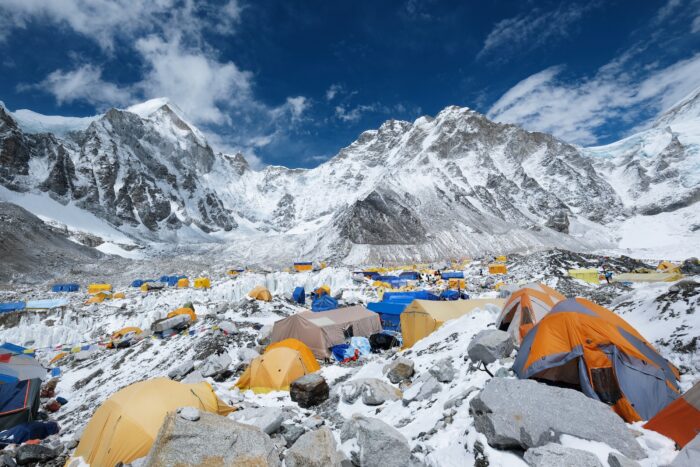Check out our recent interview with Steph Davis for the scoop on the best innovations in climbing over the years, her favorite gear, when you can climb with her, and more.
There’s nothing quite like nerding out on gear with one of the most popular climbers of all time. This past week, we got a chance to Zoom call with professional climber Steph Davis to talk all things climbing: ropes, shoes, draws, and more.
Wondering what her go-to crag pack is? Maybe how climbing gear has changed since those early Yosemite days? What about her advice for new climbers?
We’ve got all that and more.
Steph Davis Q&A

GearJunkie: You’ve been climbing since the ’90s. What has been the most significant evolution in gear you’ve seen in the past 20 years?
Steph Davis: Oh gosh, there’s so many. I’d say the best evolution in gear has been the combination of lightweight and durability. That’s like the Holy Grail for climbing equipment — and very difficult [to get].
When things were heavy, it was when the materials weren’t yet there, or you needed it for safety, so a lot of times, the weight had to be there. People have been pushing to get that lighter, but there’s a tradeoff with durability and longevity.
Sometimes you are willing to make that tradeoff. But as material and construction methods have improved, I think that’s the biggest thing I’ve seen now. Light and durable, and safe.
With current gear, one place I find this has really manifested is with quickdraws. Mammut came out with the Sender draws recently, and I just lost my mind. They are adequate sport climbing quickdraws, and they handle well, they are the right size … and they weigh nothing.
GJ: Have ropes changed as well?
I remember when I started climbing, people were using 11mm as their normal lead rope; it was crazy. To see these ropes getting lighter and thinner, but also having that hefty — maybe that isn’t the right word — having that still substantial texture. It’s so cool.
And there will still be times when I take a heavier rope, maybe someone’s jumaring on it, or there’s loose rock where you’re going, but still — heavier ropes nowadays are still very light. It’s lighter, and it’s trustworthy.
GJ: Last year, we saw the first 100% recycled weave rope. How big was that for the climbing world?
So, now brands are taking all these pieces that they would normally throw away, and they are using all of that to make a rope. So, the sheath ends up being multicolored, not “this is a blue rope.” There’s a big sustainability push that’s going on, too, for sure.
GJ: How about dry-treated ropes? Was there a time when that was a huge deal for ropes?
GJ: You’ve had different sponsors over the years. At the time, did any gear that you tested ahead of its time stick out?
GJ: How about climbing shoes?
GJ: Is there something sentimental that remains in your kit from when you first started climbing?
GJ: What about having women’s-specific gear is important to you?
Steph Davis’ Go-To Climbing Kit
- Mammut 9.0 Crag Sender Rope
- Mammut Neon Gear Crag Pack
- Mammut Nordwand Harness
- Mammut Workhorse Quickdraws and Sender Quickdraws
- Mammut Wall Rider MIPS Helmet
- Mammut Aenergy Light Jacket
- Indian Creek Crack Clinic, April 23-25, 2023
- Moab Women’s Clinic, May 7-9, 2023













